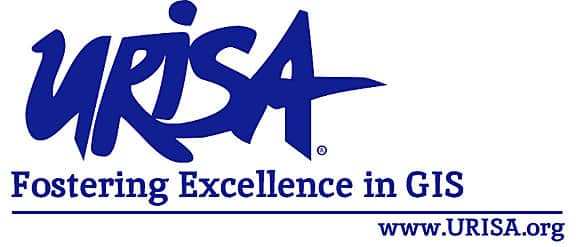The adage is true: you never get a second chance to make a first impression.
When people ask GIS practitioners what they do, many respond with, “I’m a GIS professional,” or “I’m a GIS technician,” or “I’m a GIS analyst.” Then the inevitable question follows: What is GIS? Often, GIS practitioners stammer “um” and “ah” a few times before saying something like, “I make maps” or “GIS is like Google Maps on steroids.”
What kind of first impression does this make? These answers don’t give people a true idea of what GIS practitioners do or why GIS is important, and they marginalize what GIS practitioners can accomplish. This is why it’s important to have a good elevator pitch.
The Essence of an Elevator Pitch
Elevator pitches are short, one- to three-minute speeches that people use to describe what they do and why it’s important to the person or group they’re talking to. The idea is that two people are riding in an elevator together, and one person only has the time between when they get on and the other person gets off to get their point across.

An elevator pitch has three main goals. First, speakers need to establish their credibility. Second, they need to make the other person curious. Third, they need to ensure that the other person will want to talk to them again. Depending on who is on the receiving end of the speech, there can be additional, more minor goals. If the other person is a potential client, for example, speakers might want to highlight their capabilities or experience. But be careful not to overload an elevator pitch with too much detail. Remember, it needs to be short!
So how can you accomplish the three main goals of a good elevator pitch? Here are some ideas.
How to Establish Credibility
People normally establish credibility by introducing themselves. In an elevator pitch, state your name, job title, and the organization you work for. Don’t assume that other people know who you are, even if they work at the same company or agency as you.
Next, name some clients you’ve worked for. This is especially useful if the people you’re talking to have knowledge of or connections to someone you mention. That association can provide them with a frame of reference for your work. It allows them to relate to what you’re saying and, later, check up on what you tell them. This can also start you down the path to your second goal—generating curiosity.
For someone I don’t know, my elevator pitch would sound something like this: “Hello, I’m Tripp Corbin, a business development manager for Surveying And Mapping, LLC, also known as SAM. We’ve provided GIS services to clients very similar to your organization, like Newton County Water and Sewerage Authority, Burlington Municipal Waterworks, and the Kansas City Board of Public Utilities.”
If I were talking to someone who’s part of my organization, I’d say something more along the lines of this: “Hello, my name is Tripp Corbin, and I’m the GIS coordinator for the city. I oversee the city’s enterprise GIS, which supports several departments, including the planning, emergency management, and public works departments. My team does field data collection, spatial data analysis, mapmaking, and web app development for those departments.”
As you can see from these examples, I identify who I am and what I do, no matter whom I’m speaking to.
How to Make People Curious
The next step is to make the people you’re talking to curious. Hopefully, you’ve already piqued your audience’s interest by talking about some of your past clients. If so, people often follow that up with questions such as, What did you do for them? or What problem did you solve? If you don’t get asked these questions, however, don’t fret. Just ask people what issues they’re having or what might interest them. Generally, people like to be engaged. It makes them feel like they’re part of the conversation and aren’t in the middle of a sales pitch. You can then use what they tell you to explain how you could help solve their problem.
As you do this, be sure to include the possible results or benefits people can attain by working with you. It doesn’t have to be specific, like, “We could save you $1,000 or 200 hours.” In an elevator pitch, it can be more general.
For example, you might say something such as, “For one of our clients, we performed an underground utility inventory that was integrated with their work order and Call Before You Dig systems. This helped reduce the number of lines that got cut, plus those repair costs. I understand that you’ve been having problems with your distribution lines getting cut. I’m sure we could achieve similar results for you.”
That last part is the hook that will make people want to talk to you again—the third goal of an elevator pitch. You’re showing them that you know how to solve a problem that’s similar to one they’re experiencing.
How to Get People to Talk to You Again
Of course, to talk with people again, you’ll need to get their contact information. Thus, your final task is to ask people what the best way is to get in touch with them so that you can set up a meeting. Ensure that you get their name, title, and an email address or phone number. Once you have people’s contact information, tell them when they can expect to hear from you. This is extremely important. Not only does it display professionalism and a commitment to follow through, but it also sets the stage for building trust.
The people you speak to may request your contact information, too. By all means, give it to them. But try not to let them do this in lieu of you obtaining their contact information. While they may have the best of intentions to get back to you, people often get sidetracked. You want to get their contact information so that you can keep yourself on their to-do list.
A Sample Elevator Pitch
Putting all this together, a good elevator pitch might sound something like this:
“Hello, I’m Tripp Corbin, business development manager for Surveying And Mapping, LLC—also known as SAM. We provide GIS, aerial, and surveying services. SAM recently helped Newton County Water and Sewerage Authority when its distribution lines were being cut. We inventoried the utility’s assets, loaded the data into its GIS databases, and integrated all that with Newton’s Call Before You Dig systems. This reduced the total number of accidental line cuts by 30 percent and decreased repair costs. I understand that you’re having a similar issue with all the construction going on in your area. I’m sure we could help you solve your problem as well. I’d enjoy talking with you about this in more detail. What’s the best way to reach you to schedule a time to chat? Can I get your email address or phone number? Thank you! I’ll get in touch with you next week to set up a meeting. I look forward to talking with you again soon.”
Remember, you’ll need more than one elevator pitch to use with different audiences. So take the time to develop a few, and then practice them!
To learn more about how to create a good elevator pitch, consider attending the Urban and Regional Information Systems Association’s (URISA) GIS Leadership Academy, which is put on a couple of times a year. More details can be found on URISA’s website.



